I’d like to preface this post by saying, I am far from a pasta expert. While I aspire to Italian nonna level pasta making skills, I have some work to do to get there. That said, I’m of the opinion that while making perfect pasta is difficult, making delicious pasta is not. Provided you have flour and eggs on hand, you can have tasty hand made pasta on the dinner table tonight. With this dough, you can try our Roman pasta recipe: Cacio e Pepe, simply delicious.
How to make fresh egg pasta dough
I have a bit of an aversion to (possibly a phobia of) single use kitchen gadgets. Perhaps it’s all the time I’ve spent cooking in tiny kitchens, but I have literal nightmares about drawers and cupboards overflowing with egg peelers, avocado slicers, corn holders, and garlic presses. Therefore, as of this writing, I do not own a pasta machine. I don’t have anything against them as, unlike many kitchen gadgets, they do actually make the job at hand (rolling pasta) much easier and more efficient than the alternative (using a rolling pin). But, since I don’t make pasta all that often, thus far it hasn’t seemed like a worthwhile investment (monetarily and space-wise).
All that to say, you don’t actually need a pasta machine to make fresh pasta at home. If you’re making lasagna noodles, you do need a rolling pin (or a wine bottle!), but for some shapes, like orrecchiette or pici, the only tools you need are your hands and a flat surface! If you really want to feel like an Italian nonna, don’t even bother with a bowl when you’re mixing the dough - simply make a pile of flour on your flat surface of choice, then create a well in the center and add the eggs and water to the well. Use a fork to gradually incorporate the flour into the eggs until you have a sticky dough, then knead the rest of the flour into the eggs until a smooth, satiny pasta dough forms (this takes more time and energy than you might think and I highly recommend you ask your children or partner to assist with this part). After resting the dough (and your arms), divide the dough and shape as desired.
You don’t even need a bowl to make fresh pasta at home!
A few notes on shaping fresh pasta dough without a machine
First and foremost, make sure you rest the dough before you begin rolling it out. Resting allows the gluten to relax so that the dough doesn’t spring back when you put pressure on it. Don’t try to roll all the dough out at once - dividing it into 6 pieces will make it much easier. I like to laminate the dough as though I was sending it through a pasta machine - I find that this helps me to more easily roll the dough into a rectangle, and therefore don’t have to trim as much during shaping.
I roll the dough into an oval, then fold the rounded edges into the center line. Then I fold the dough in half over the center line to create a little rectangle. I like to do this to all the dough pieces at the beginning, then allow them to rest as I roll the rest of the dough. If the dough is springing back while you’re rolling it out, try stretching the dough slightly by rolling one end of the dough over the rolling pin and then pushing the pin away from you. Also, don’t be afraid to let a partially rolled piece of dough rest for a few minutes - it can help the gluten relax again.
Once the pasta is rolled into a thin sheet, cut into your desired shape. For lasagna noodles, I aim for the sheets to be about 4.5” x 6.5” so that four pieces fit snuggly in a 13x9” pan. For pappardelle or tagliatelle, I fold the dough into thirds and then slice the noodles into my desired width.
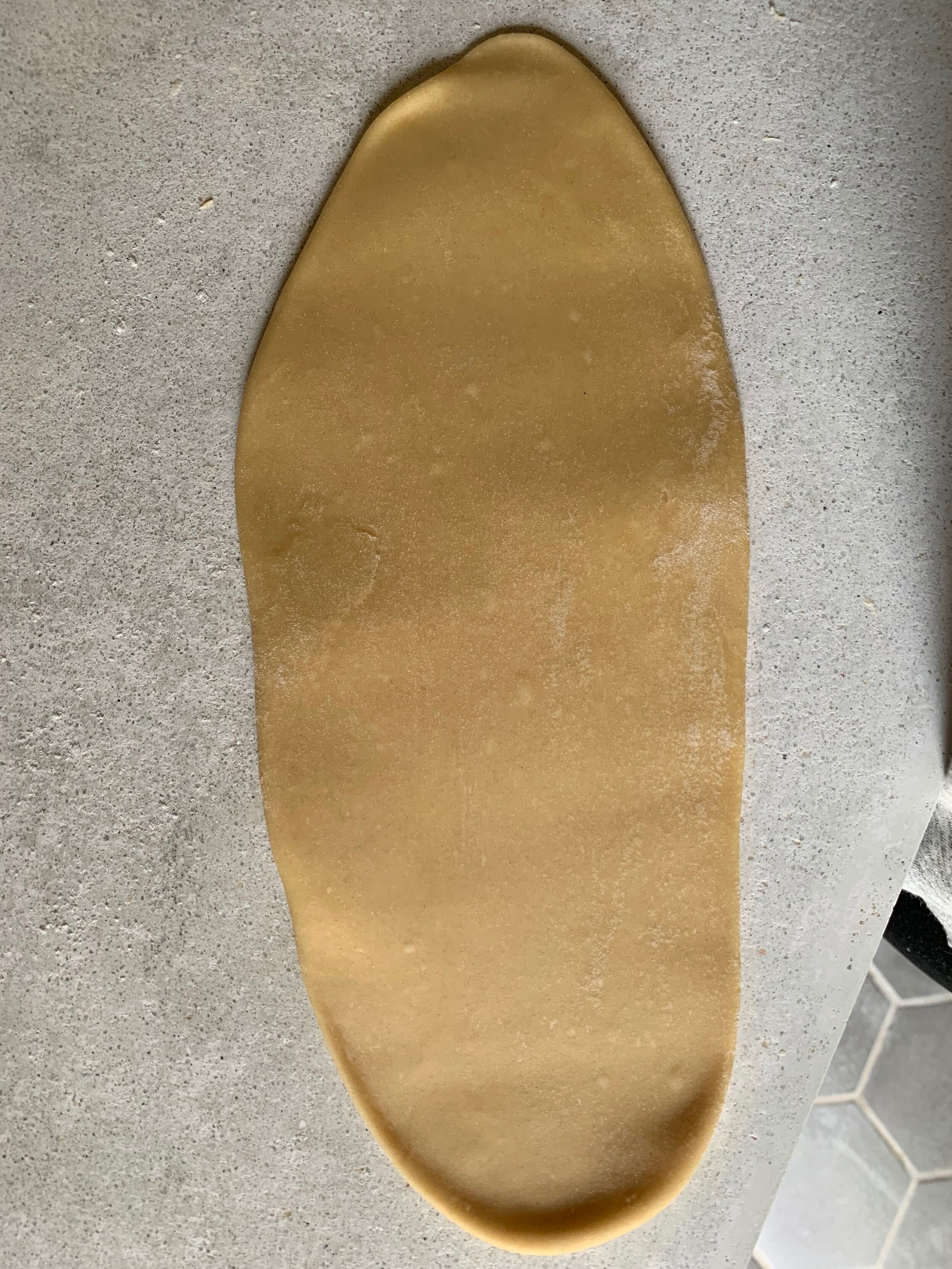
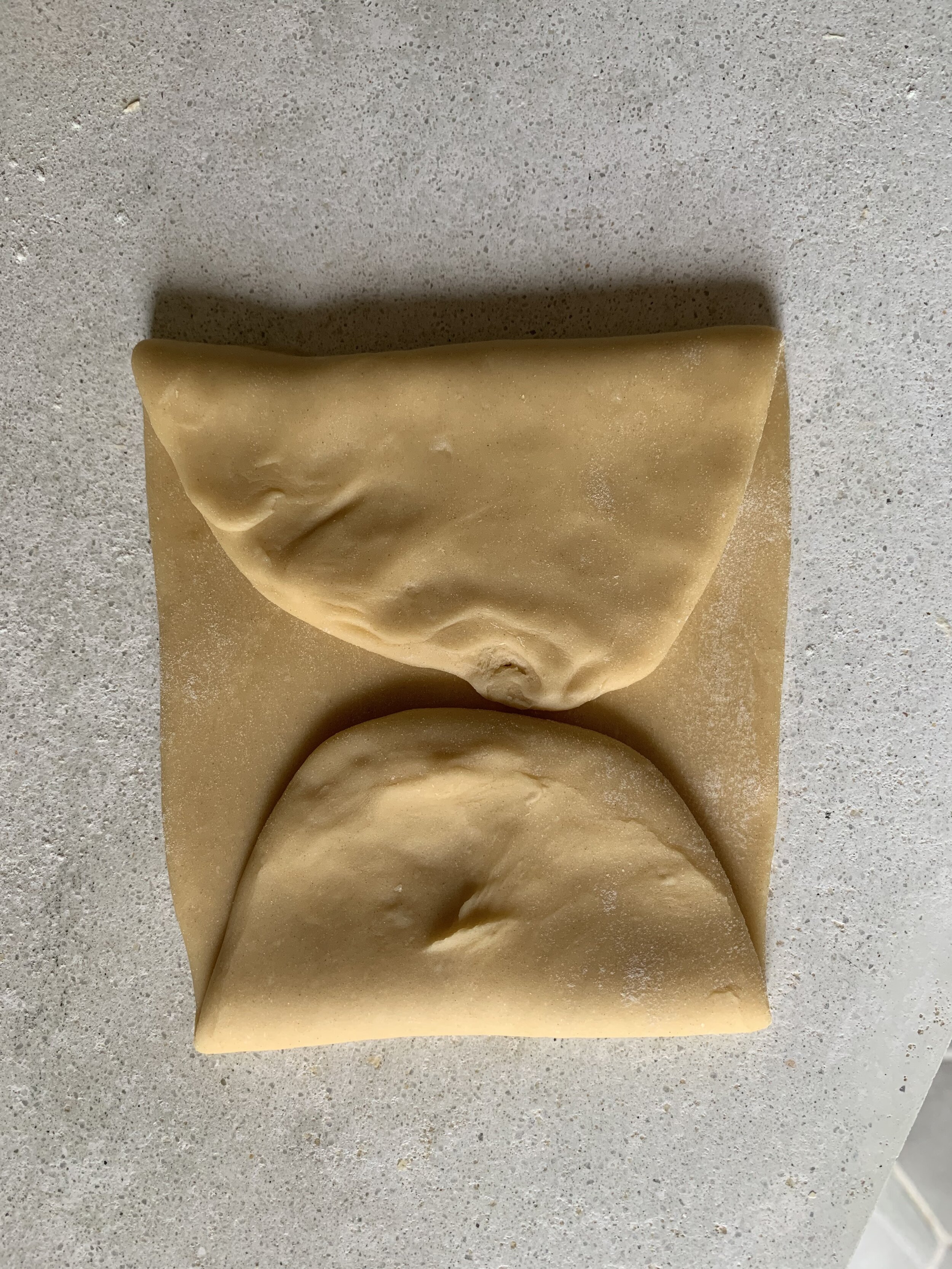
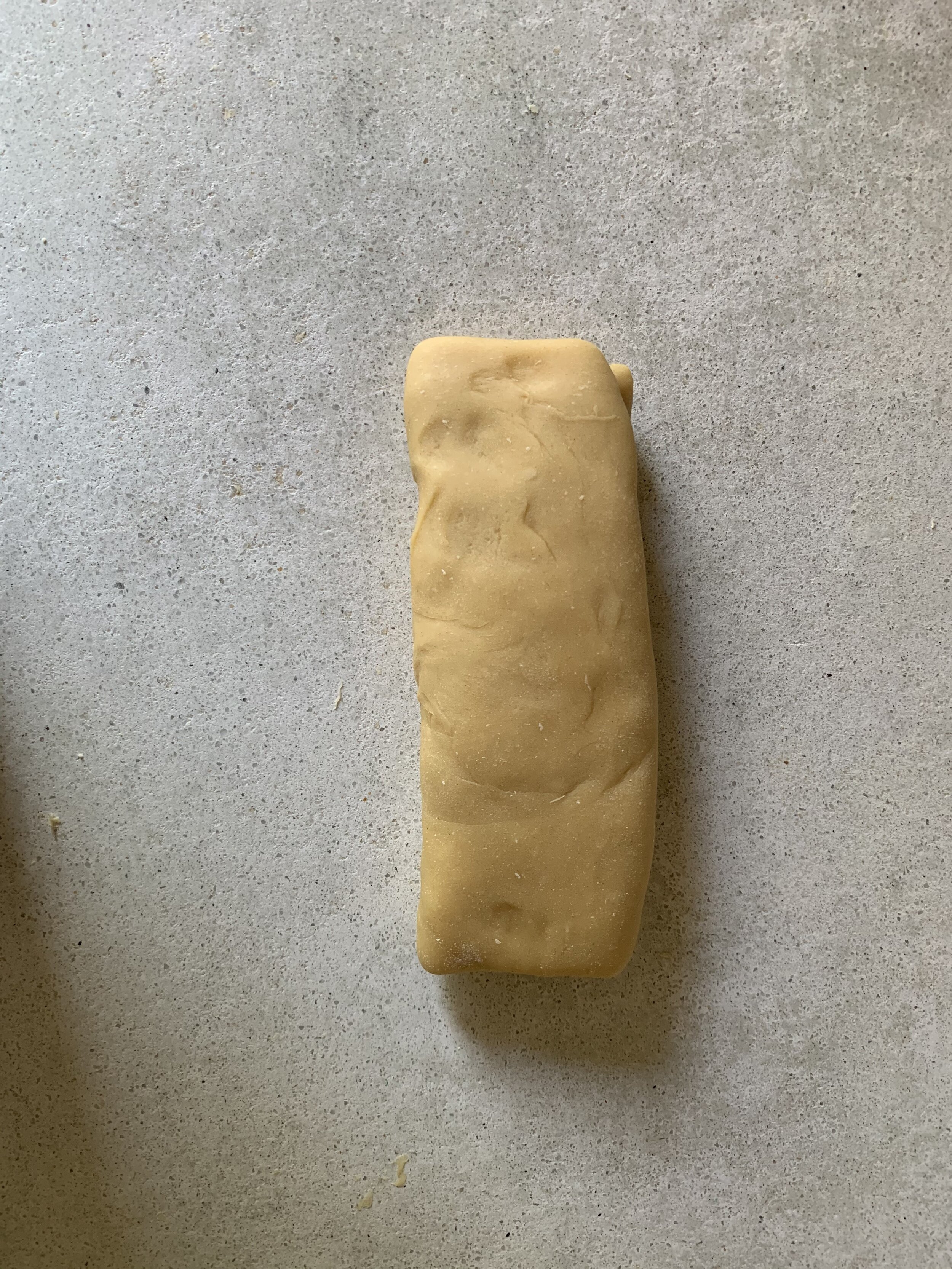
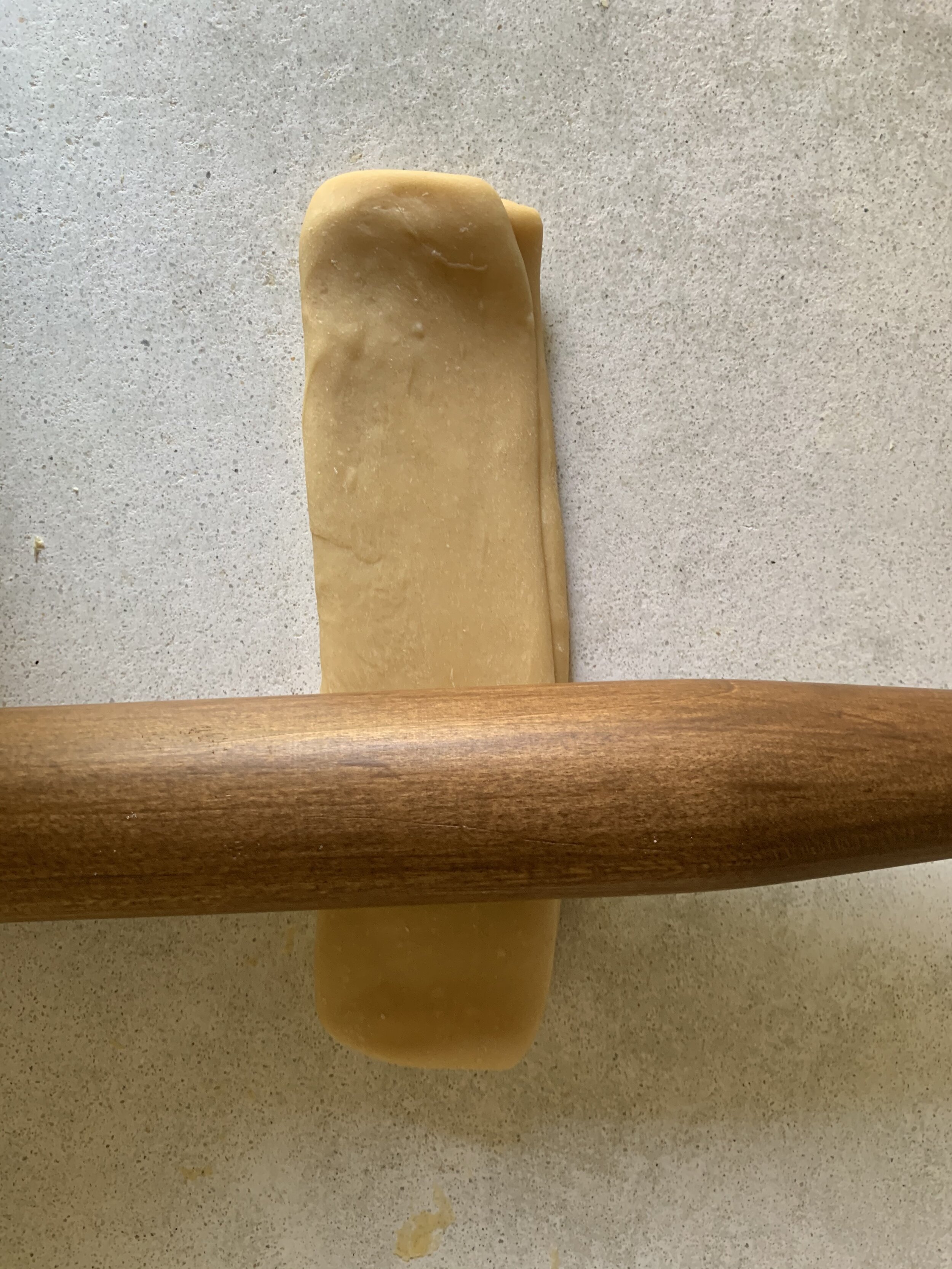
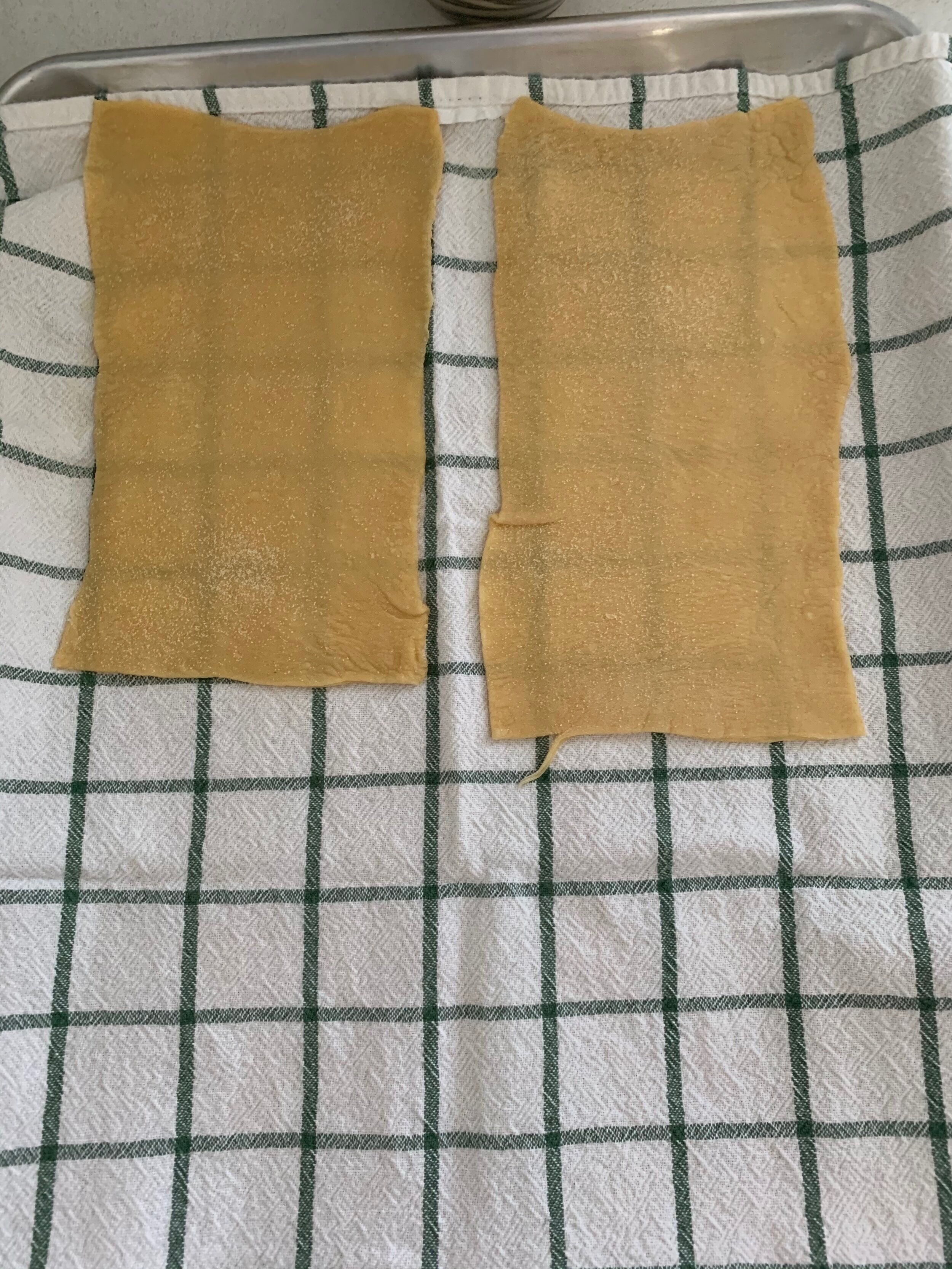
Note that the recipe below is specifically for hand rolled noodles and is therefore a bit softer than some fresh pasta recipes out there. However, if you add a bit more flour (a teaspoon or so at a time until the dough becomes quite stiff), you can make orecchiette using method 1, or make orecchiette using method 2. Traditionally, orecchiette, which means “little ears,” is made with semolina and water, but I think it’s equally delicious with an egg pasta dough.
How to prepare fresh pasta
Fresh pasta should be cooking in generously salted, rapidly boiling water for 1-3 minutes depending on the shape (lower end of the spectrum for thin, flat noodles, upper end for orecchiette). It should be cooked through but still quite al dente when you remove it from the pot. If the pasta is going into a lasagna, you only need to cook them for 30 seconds or so - they should be quite firm, as they will continue to cook in the oven.
This recipe is a part of our lasagna bolognese series, so of course the pasta would be perfect as a component of the dish. As I’ve mentioned, lasagna bolognese is a bit of project. If you don’t want to make the whole dish, you could cut the pasta into pappardelle or tagliatelle and serve with our traditional Ragu Bolognese recipe. If you choose to make orecchiette with the dough, I’d highly recommend this (very easy) recipe for orecchiette with broccoli and sausage. Just be sure to undercook the orecchiette (90 seconds or so).
Lasagna assembly
Hand Rolled Egg Pasta Recipe
21 oz (about 4 cups) all purpose flour
¼ cup plus 2 tablespoons water
6 large eggs
A pinch of kosher salt
Mound the flour on your work surface, then create a well in the center.
Crack the eggs into the well followed by the water and the salt. Using a fork, carefully begin to whisk the egg mixture, gently incorporating flour from the sides of the well as you whisk.
Continue incorporating the flour until a very sticky dough has formed, then use your hands to knead in the remaining flour. It may seem quite shaggy and dry at the beginning, but eventually it will transform into a cohesive, elastic dough.
If it is quite sticky, add a bit more flour. Continue to knead for 10 minutes or so - the dough should be smooth and satiny at this point and should spring back immediately when poked.
Allow the dough to rest for at least 30 minutes.
Divide the dough into six pieces and shape as desired, perhaps using one of the methods mentioned above.
Dreaming of travel to Italy or some other European destination? We can help with that! We are here for your custom trip planning to Italy, France, Ireland, the UK and all of Europe. We are experts in creating custom travel itineraries and leading small group trips to European destinations. We also book European cruises! Feel free to reach out via email — We’re always available to talk about travel!
Chelsea is one third of the Euro Travel Coach team (and is the daughter of the other two thirds of the team, Greg and Betsy). She has a passion for food and wine and has a background in hospitality. She attended Cornell University's School of Hotel Administration and interned with two of New York City's best restaurant groups while she was in school. After graduation she worked at the number one wine auction house in the United States, Chicago's Hart Davis Hart Wine Co. There, she organized various wine centric events for HDH's most valuable clients. She and her husband moved to Copenhagen, Denmark in 2016 and then to Bristol, UK in 2018 and traveled through Europe extensively during their time living abroad. Her expertise in food and wine and her experience living in Europe helps her to find amazing accommodations, delicious restaurants, and unique experiences for Euro Travel Coach clients.





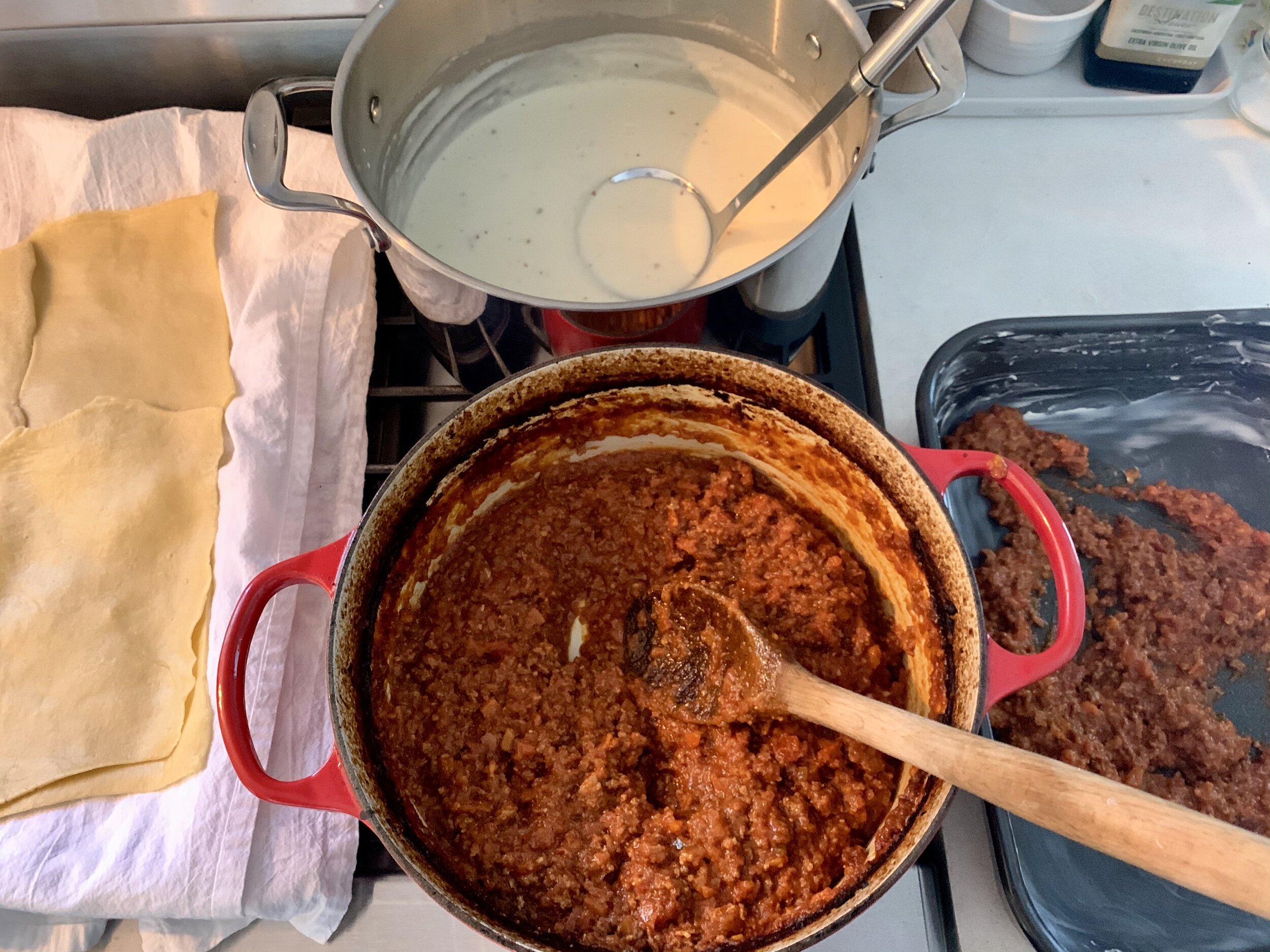



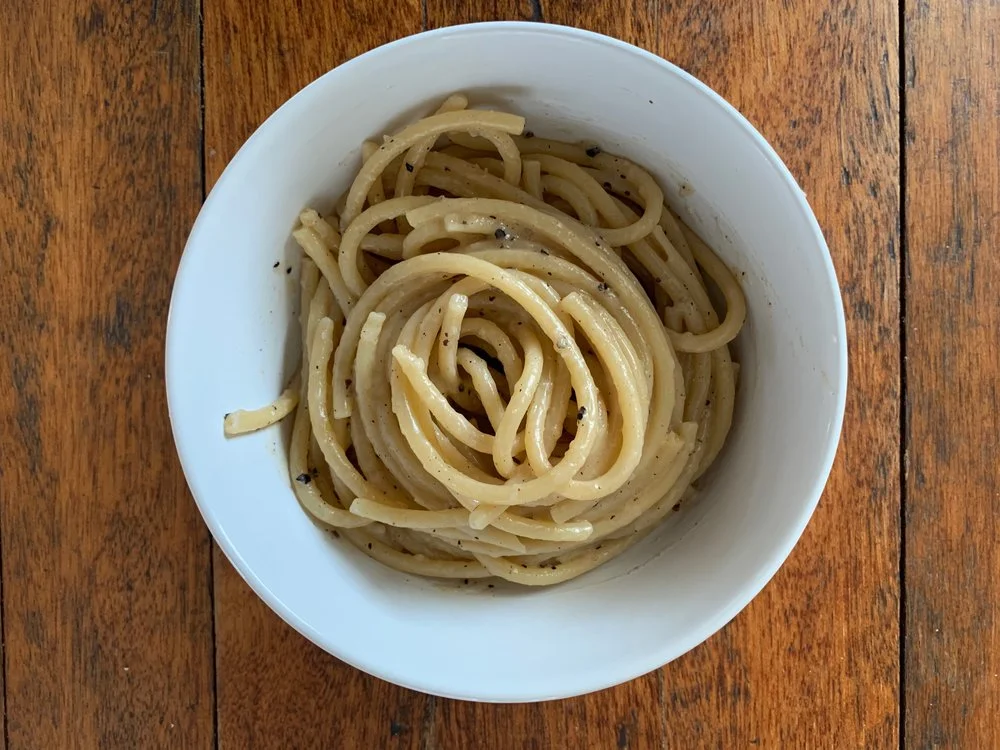

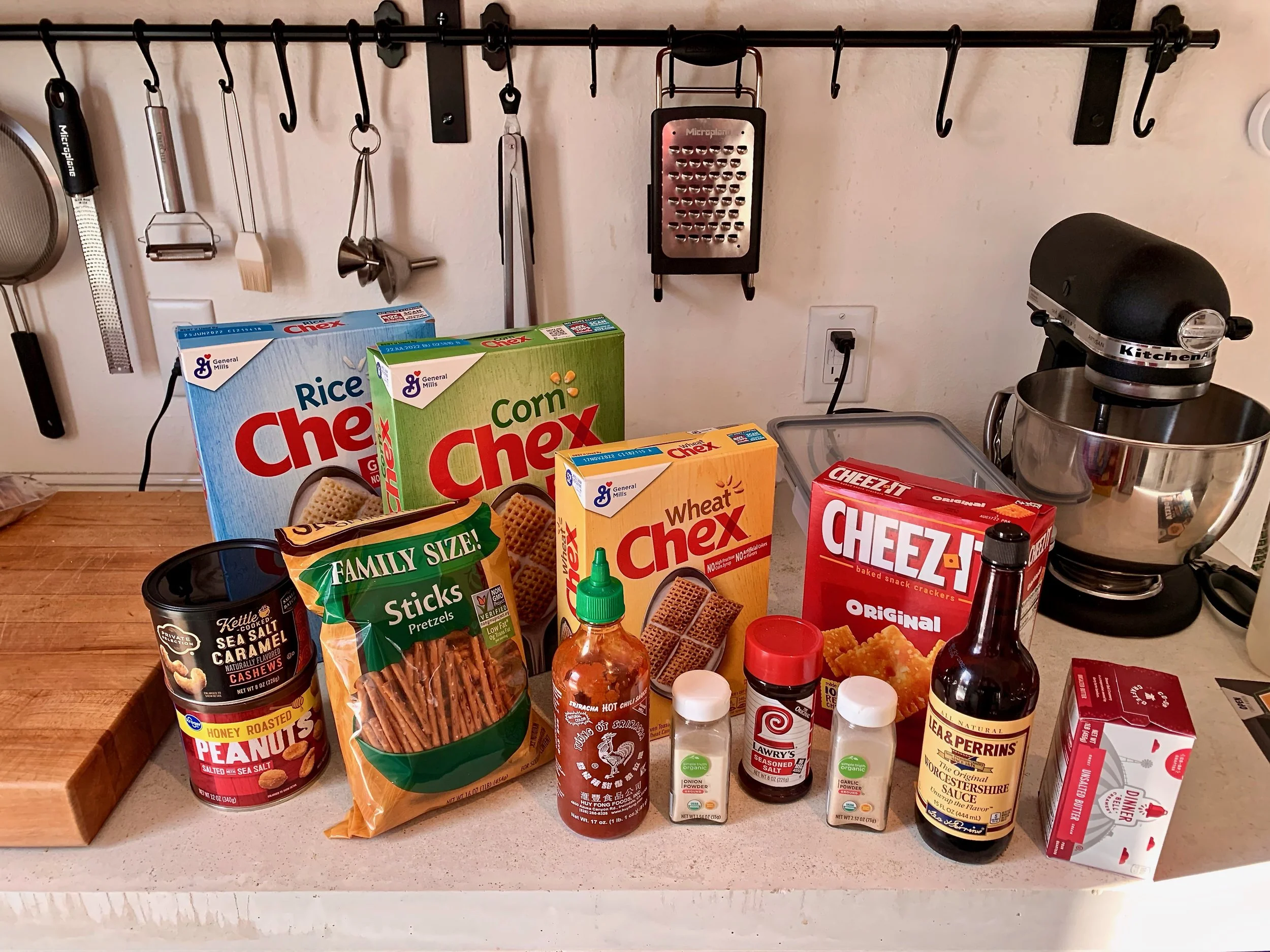

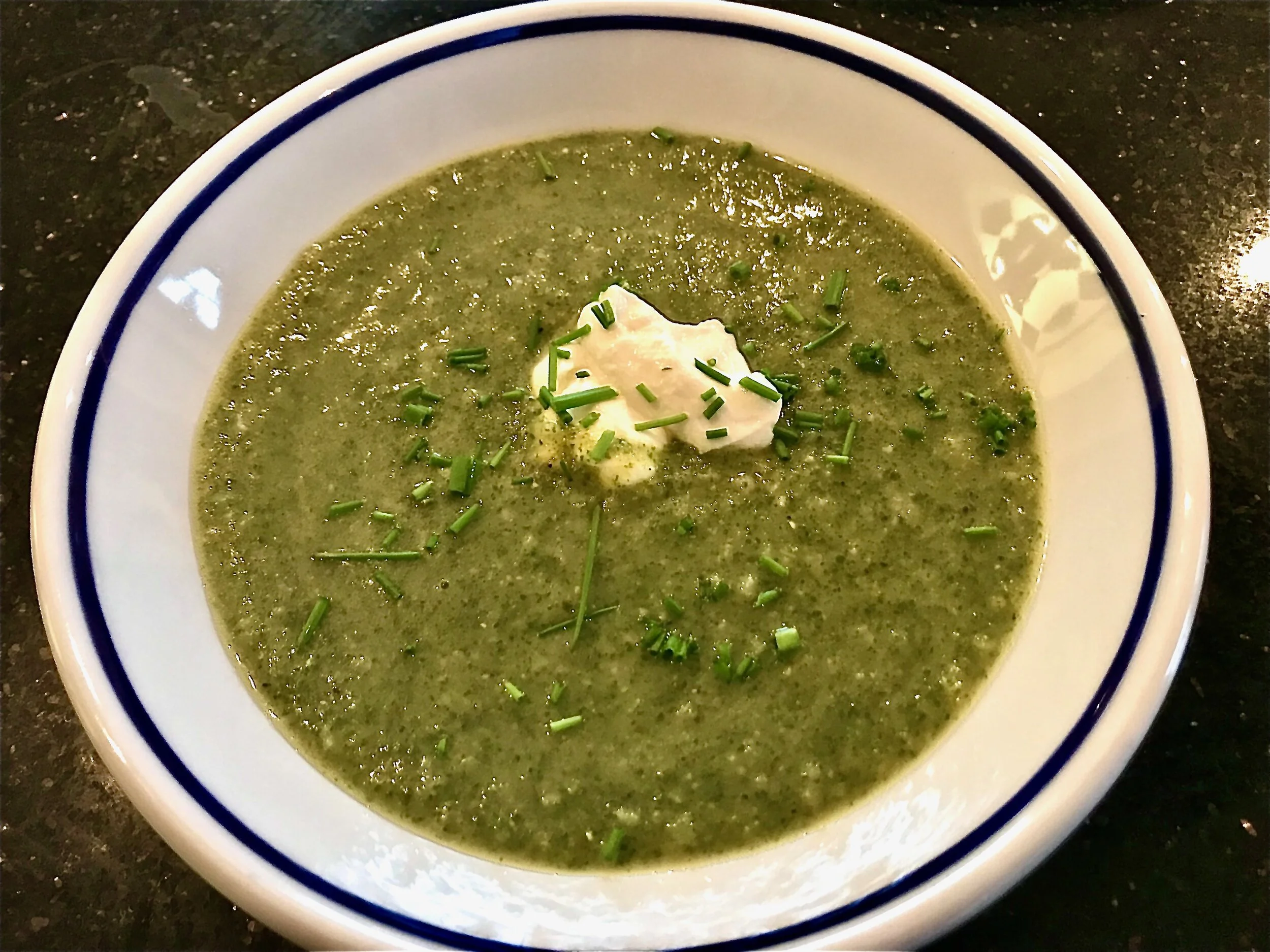
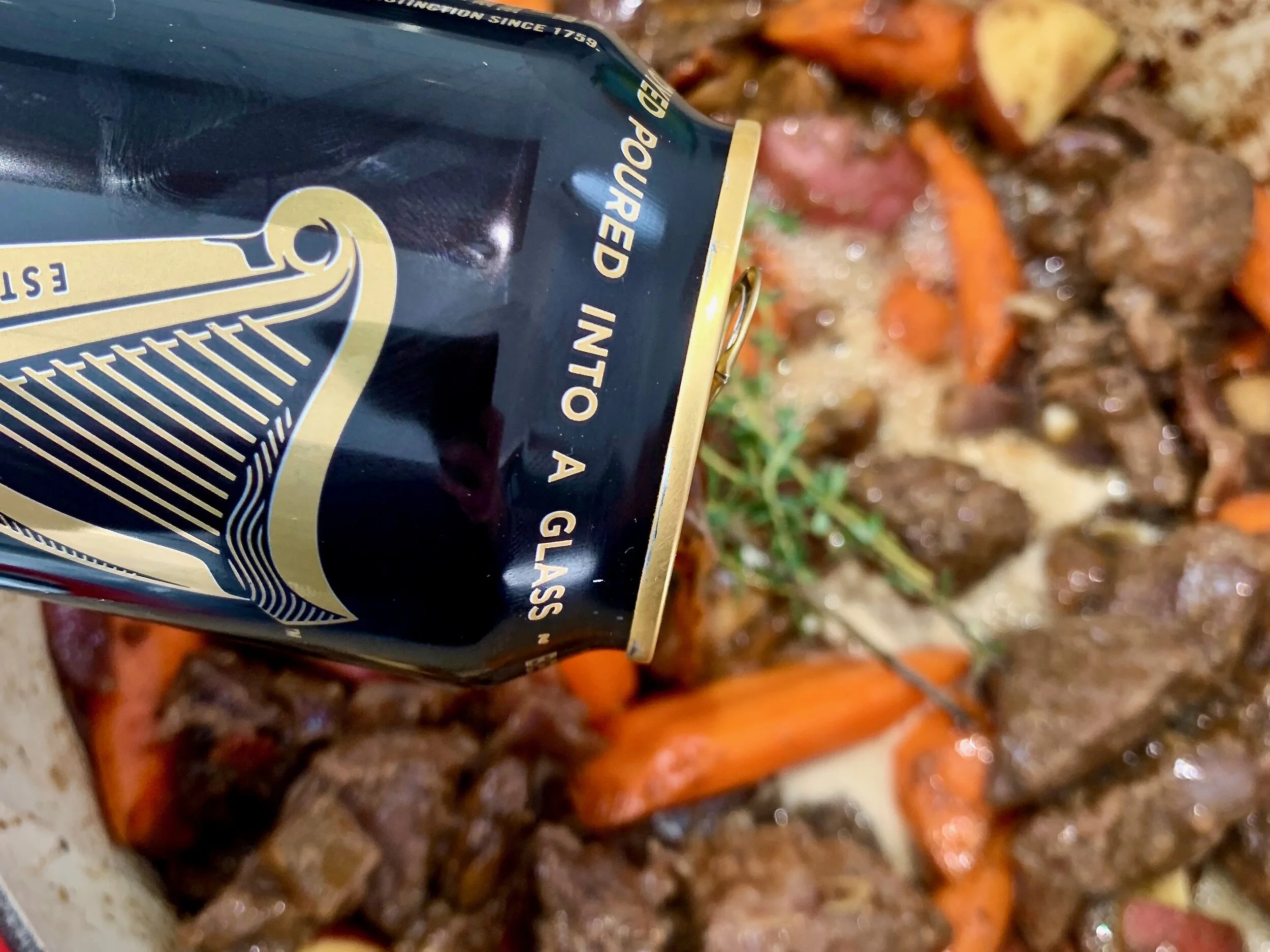



When you are Planning a Trip to the United Kingdom, it’s fun to try a British dessert as you prepare. Sticky Toffee Pudding is a popular dessert in the UK. It is almost surprising you don’t see it on more menus in the US. Now you can make it at home by following this easy recipe. Be sure to include places to enjoy this dessert in your Travel Itinerary to Great Britain!